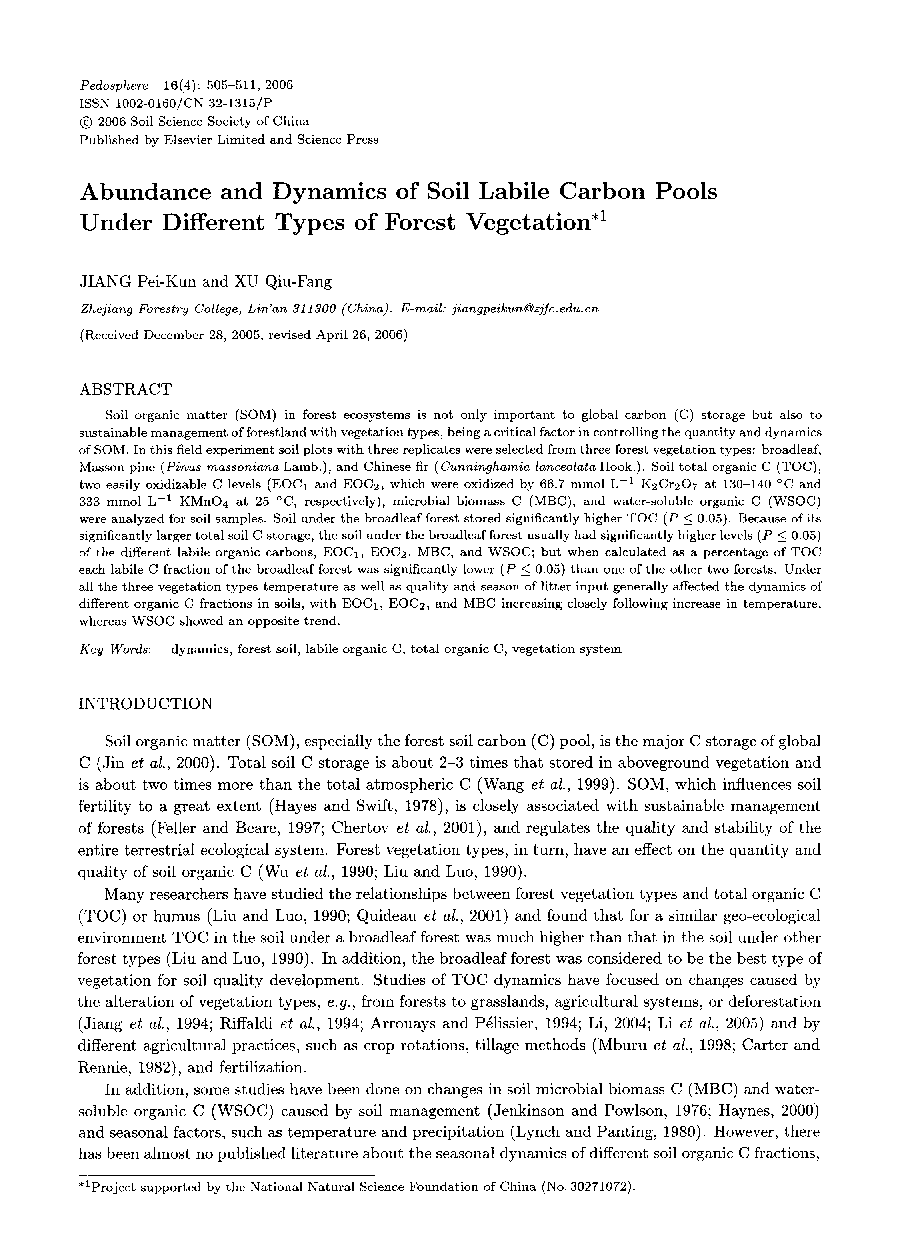| کد مقاله | کد نشریه | سال انتشار | مقاله انگلیسی | نسخه تمام متن |
|---|---|---|---|---|
| 4582043 | 1333733 | 2006 | 7 صفحه PDF | دانلود رایگان |

ABSTRACTSoil organic matter (SOM) in forest ecosystems is not only important to global carbon (C) storage but also to sustainable management of forestland with vegetation types, being a critical factor in controlling the quantity and dynamics of SOM. In this field experiment soil plots with three replicates were selected from three forest vegetation types: broadleaf, Masson pine (Pinus massoniana Lamb.), and Chinese fir (Cunninghamia lanceolata Hook.). Soil total organic C (TOC), two easily oxidizable C levels (EOC1 and EOC2, which were oxidized by 66.7 mmol L−1 K2 Cr2 O7 at 130–140 °C and 333 mmol L−1 KMnO4 at 25 °C, respectively), microbial biomass C (MBC), and water-soluble organic C (WSOC) were analyzed for soil samples. Soil under the broadleaf forest stored significantly higher TOC (P ≤ 0.05). Because of its significantly larger total soil C storage, the soil under the broadleaf forest usually had significantly higher levels (P ≤ 0.05) of the different labile organic carbons, EOC1, EOC2, MBC, and WSOC; but when calculated as a percentage of TOC each labile C fraction of the broadleaf forest was significantly lower (P ≤ 0.05) than one of the other two forests. Under all the three vegetation types temperature as well as quality and season of litter input generally affected the dynamics of different organic C fractions in soils, with EOC1, EOC2, and MBC increasing closely following increase in temperature, whereas WSOC showed an opposite trend.
Journal: Pedosphere - Volume 16, Issue 4, August 2006, Pages 505-511